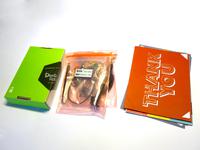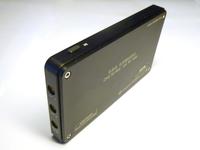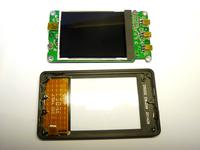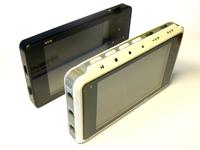DSO Touch



I received a DSO Touch as a free review sample from Seeed Studio. This is a review of it, from a DSO Quad owner's perspective.
DSO series
First off, I must say that compared to DSO Nano, the DSO Touch is a huge upgrade and a worthy continuation of the line. However, I have never owned a DSO Nano and it would be way too limited for my purposes.
However, I don't think the DSO Touch is much of an upgrade compared to the DSO Quad:
| DSO Nano | DSO Touch | DSO Quad | |
|---|---|---|---|
| Samplerate | 1 MSps | 10 MSps | 72 MSps |
| Channels | 1 | 2 | 2 analog, 2 digital |
| Waveout | No | 1 MSps | 1 MSps |
| ADC | STM32F103 internal | STM32F303 internal | AD9288-40 |
| FPGA | No | No | ICE65L04 |
| RAM | 20 kB | 48 kB | 48 kB |
| Controls | 7 buttons | 1 button, touch area | 4 buttons, 2 scrollers |
User interface
Despite the name, the DSO Touch does not actually have a touch screen, just a capacitive touch area. But it does work a lot better than the crappy scrollers on DSO Quad.
The early application seems to be a bit unresponsive at times, but is already a lot better than the original DSO Quad application ever became.
If your browser does not support WebM for video, you can either watch on YouTube or download the video.
Hardware



The main PCB contains:
- STM32F303VCT6 processor: 72 MHz Cortex-M4F, 256 kB flash, 40 kB RAM
- HC4053 analog switch, used for gain selection
- Haier HC64005 touch area controller
- Winbond 25064 SPI flash chip
- AXP192 li-ion charger
Like in DSO Nano, the input is sampled directly by the STM32 ADC. This explains the lower samplerate compared to DSO Quad. I'm not sure if the STM32F303 internal opamps are used to buffer the signal, but I hope so because there aren't any external ones visible.
What I would have wanted
I must say that I am somewhat disappointed, as I was expecting an improved version of DSO Quad. If it was up to me, here is what I would have wanted:
- Keep the FPGA, maybe upgrade to a better one
- Keep the separate ADC
- Redesign the analog frontend
- Use STM32F4x7, with the largest amount of RAM and ROM available
- Bring out a bunch of FPGA pins, e.g. 8, on a small connector
- Somehow get a good software made for it
However, I now realize that DSO Touch was never meant to be a DSO Quad replacement, and I'll have to keep waiting for such a device.
Overall feel

Overall, I think this will be fine as a DSO Nano upgrade. It brings it to a usable range for some small debug work and as a beginner scope. The aluminum case is very good looking, the user interface is ok, and the probes seem to be good also. Two channels and a wave out is also enough for most purposes. I hope the pricing stays in the sub-100 USD range of the DSO Nano.
But I also hope that Seeed will one day develop a portable scope that can surpass DSO Quad. It is amazing what it can already do, and it could do so much more if software development was just a bit less limited by the hardware.
– Petteri Aimonen on 6.9.2014
